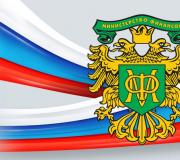Cubism in ethnic style. Paintings in the style of cubism!!! Cubism in Russia
Details Category: Variety of styles and movements in art and their features Published 07/14/2015 13:25 Views: 5015The emergence of Cubism dates back to 1906-1907. Usually this movement in art is associated with the name of Pablo Picasso and is considered the founder of Cubism.
This is true. But a new phenomenon in art never appears suddenly: there are always predecessors and prerequisites. This is what we'll talk about.
About the term
The term "cubism" came into art with French: cubismе, cube – cube. And it was first used by the critic Leon Vaucelle in 1908, describing the works of J. Braque.

Georges Braque (1882–1963) – French artist, graphic artist, sculptor and decorator; he is the creator of cubism along with Picasso. In 1908, Braque created a series of landscapes, innovative for those times. These landscapes were not accepted by the Autumn Salon (an association of artists in France, founded in 1903). Henri Matisse said then that landscapes are made of cubes. This is where the word “cubism” comes from. Let's look at these works by J. Braque.

J. Braque “The Road near Estac” (1908)

J. Braque “Harbor in Normandy” (1909)
History of Cubism
In 1907, P. Picasso created the painting “ Avignon girls", she produced strong impression on J. Braque. In 1908, Braque and Picasso began to work closely together, developing the principles of a new artistic direction. At first, they analytically destroyed the usual images of objects, as if “disassembling” them into separate forms and spatial structures. J. Braque believed that “feelings deform, reason shapes.” Thus, we can assume that the artist came to cubism not intuitively, but through reasoning - it was in this direction that he was able to more fully realize himself.
In 1912, they began working in the techniques of collage and appliqué and became interested in the reverse process - synthesizing objects from dissimilar elements.
How did P. Picasso come to cubism? Not right away either.
Pablo Picasso (1881-1973)

P. Picasso “Self-Portrait”
P. Picasso – spanish artist, sculptor, graphic artist, theater artist, ceramicist and designer. His work had an exceptional influence on the development of fine art of the 20th century. He is famous artist among those who have lived over the last 100 years, and also very “popular” among painting thieves.

H. Gris “Portrait of P. Picasso” (1912). Art Institute(Chicago)
At first there were experiments with color. From 1901 to 1906 - “blue” and the beginning of the “pink” period of his painting. Then there was a desire to convey mood - this desire for formulas that reflect the typical, universal in art, which corresponded to deep processes European civilization at the turn of the century. Finally, Picasso turned to the analysis of form: conscious deformation and destruction (from the Latin destructio - “destruction, disintegration of a structure”) of nature.

P. Picasso “Les Demoiselles d’Avignon” (1907). Canvas, oil. 243.9 x 233.7 cm. Museum contemporary art, NY
In 1907 he wrote “Les Demoiselles d’Avignon”. It is believed that this painting marked the beginning of cubism in the artist’s work, and then an entire artistic movement. And its origins lie in a one-sided interpretation of Cezanne’s system, who recommended the young artist Picasso “to consider nature as a totality simple shapes– spheres, cones, cylinders.” It is believed that Picasso, like J. Braque, took this advice literally. In addition, during this period Picasso was interested in African sculpture, which was also reflected in his new work.
In the picture we see deformed, roughened figures in the absence of perspective and chiaroscuro. The painting demonstrates a radical break with the traditional point of view in painting. Five nude women with figures consisting of flat geometric shapes and jagged fragments, some of them wearing African masks. This painting is a strategy for the future development of cubism in Picasso’s work.
Cubism rejected the traditions of naturalism and the visual-cognitive function of art. It meant a complete break with the realistic depiction of nature that prevailed in European painting since the Renaissance. The creative goal of Picasso and Braque was to construct a three-dimensional form on a plane, dividing it into geometric elements. The subjects of the paintings of cubist artists (for now we are talking only about the work of Picasso and Braque) are simple, especially true for early period– it is called “Cézanne’s” cubism (1907-1909). It was influenced by African sculpture and the works of Cezanne. The canvas depicts powerful volumes, and color enhances this volume even more.

P. Picasso “Woman with a Fan” (1908)

P. Picasso “Three Women” (1909)
Period in Cubism 1910-1912 is called “analytical”: the object is crushed into small edges, clearly separated from each other, the object’s form on the canvas is lost, color is practically absent.

J. Braque “Dedication to I.S. Bahu" (1912)

P. Picasso “Portrait of Ambroise Vollard” (1910)

P. Picasso “Violin” (1912)
The last period is known as "synthetic" Cubism (1913-1914). It is characterized by colorfulness and greater decorativeness, the paintings become similar to colorful panels. Letter stencils and stickers appear in the drawing, forming collages.

P. Picasso “Tavern (“Ham”) (1914)

P. Picasso “Fruit bowl and bunch of grapes” (1914)

During this period, the Cubists were joined by Juan Gris (1887-1927), spanish painter, sculptor, graphic artist and decorator. He worked mainly in Paris, where he lived since 1906. It is he who is considered the founder of “synthetic” cubism. In the 1920s Gris moves away from strict geometric forms. His works include a number book illustrations and numerous theater scenery and costumes, including for Diaghilev’s ballet productions.

H. Gries “Man in a Cafe” (1914), New York
Of course, Picasso is considered the most outstanding representative of Cubism. He masterfully transformed forms into entire geometric blocks, as was done in the painting “Factory in Horta de Ebro.”

P. Picasso “Factory in Horta de Ebro” (1909)
In “Portrait of Fernanda Olivier” he dissects the form into planes and edges and fills the entire picture with them.

P. Picasso “Portrait of Fernard Olivier” (1909)
Sometimes it seems that Picasso is already moving away from Cubism - the original goal of Cubism was to more convincingly reproduce the sense of space and the heaviness of masses, but Picasso's paintings often become incomprehensible puzzles. For example, the painting “Nude”.
P. Picasso “Nude” (1910)
First World War marked the end of the collaboration between Braque and Picasso. At the same time, the cubist period in Picasso’s work also ended, although in some works the artist used individual cubist techniques until 1921.
The history of cubism in painting dates back to “Les Demoiselles d’Avignon” by Pablo Picasso, painted in 1907 under the influence of African sculpture and the work of Paul Cézanne...
At the beginning of the twentieth century, a global revolution took place in painting (and not only): artists, ignoring the conventions of the academic school and realism, freely experimented with form, color, applique and others. expressive means, as a result of which a number of modernist trends arise in fine arts. One of them is cubism.
“Portrait of Anna Akhmatova”, Nathan Altman, 1914, State Russian Museum, St. Petersburg
Story cubism in painting originates from “Les Demoiselles d'Avignon” by Pablo Picasso, written in 1907 under the influence of African sculpture and the work of Paul Cézanne.

“Les Demoiselles d’Avignon”, Pablo Picasso, 1907 (243.9 x 233.7, oil on canvas), Museum of Modern Art, New York
The figures of the girls in the picture are depicted in outline, there are no chiaroscuro or perspective, the background is fragmented into fragments of different shapes.
Then, in 1907, Pablo Picasso met a young man who had already shown good results in Fauvism (another modernist movement beginning of the twentieth century), by the artist Georges Braque. Together they become the founders of a new direction in painting - cubism, hold regular meetings, discussions, and exchange findings.

“Plate and Dish of Fruit”, Georges Braque, 1908, private collection(46x55, oil on canvas)
Name " cubism” appeared in 1908, when art critic Louis Vassel called Braque's new paintings “bizarreries cubiques,” which translated from French means “cubic oddities.”
Artists Juan Gris, Marie Laurencin, Fernand Leger joined the new direction. For several years in style cubism Robert Delaunay, Albert Gleizes, Henri Le Fauconnier, Jean Metzinger, Francis Picabia and others begin to work.

“Guitar on the table”, Juan Gris, 1915, Rijksmuseum Kröller-Müller, Otterlo, Netherlands, (73x92)
Paul Cézanne and his role in the emergence of Cubism
First period cubism called “Cézanne”, as cubist artists continued Paul Cézanne’s (1839-1906) experiments with form, perspective and the search for new compositional solutions.

“Pierrot and Harlequin”, Paul Cezanne, 1888, Pushkin Museum im. A.S. Pushkin, Moscow
The painting “Pierrot and Harlequin” was painted by Paul Cézanne in 1888, that is, 19 years before cubism as a separate direction. This work shows the artist’s elaboration of geometric shapes (circles, ovals and diamonds), the direction of the drawing lines towards a certain point, as well as a non-standard angle of view: the viewer looks at the characters as if slightly above and to the left. The perspective is depicted incorrectly: it seems that Pierrot and Harlequin are in different spatial dimensions. Original compositional solution creates the effect of broken, mechanical and puppet-like movements of the figures despite the fact that these are living characters with living faces.
In a letter to the artist Emile Bernard (circa 1904), Paul Cézanne wrote: “We need to return to classicism through nature, in other words, through sensation. In nature, everything is molded on the basis of a ball, cone and cylinder. Drawing and color are inseparable; as you write, you draw: the more harmonious the color is, the more accurate the drawing becomes. When the color reaches greatest wealth, the form becomes complete. Contrasts and tonal relationships are the whole secret of drawing and modeling.”
Stages [phases] of Cubism
In the theory of art criticism there are Stage III[phases] of cubism:
Stage I: Cézanne Cubism(1907 - 1909) - highlighting the geometric shapes of figures and objects, separating form from space/plane.
Stage II: analytical cubism(1909-1912) - crushing forms into edges and sections, building a composition using a collage of intersecting sections and planes, blurring the boundaries between form and space, visual interaction of form and space.

“Violin and Candlestick”, Georges Braque, 1910, San Francisco Museum of Modern Art (61x50, oil on canvas, direction “ analytical cubism”).
Stage III: synthetic cubism(1913 - 1914) - with the help of geometric forms and their fragments, new objects are constructed that have reality in themselves, and are not an image visible world. Collages are created, among other things, with the help of applications, which most often represent fragments newspaper sheet, pasted into the composition.

“Le Jour”, Georges Braque, 1929, National Gallery of Art, Washington (115x146.7, oil on canvas, direction “ synthetic cubism”)
Thus, the Cubists decomposed the object into geometric elements and separated it from space; the shape of the objects was shown in sections, bends, from different viewing angles, in unsystematic replications and other modifications.
Starting in France, cubism became popular in different countries world, including in Russia. To the most outstanding (most prominent) representatives cubism in painting include Pablo Picasso, Georges Braque, Fernand Léger, Juan Gris.
Subsequently, cubist artists began to develop new directions, and from about 1925 cubism will gradually decline, making its important contribution to the development of painting.
Cubism
Direction
In the “crystalline” style of writing by M. A. Vrubel, premonitions of cubism are often found.
The true discoverer of cubism is the entrepreneur and collector S.I. Shchukin, who brought Picasso’s early cubist experiments to Moscow.
In general, Russian Cubism was a purely transitional phenomenon, a kind of “school of the avant-garde.” Most of the masters who made up the core " Jack of Diamonds"(including P. P. Konchalovsky, A. V. Kuprin, I. I. Mashkov, R. R. Falk), did not go beyond the early, “Cezanne” stage, enriching it in an original and colorful way. More radically minded artists (K. S. Malevich, V. E. Tatlin and others) quickly moved to Cubo-Futurism, ambitiously promoting it as a counterweight to Cubism as a more advanced method, already free from French influences.
However, later, during his Vitebsk period (1919-1922), Malevich argued: “If you want to study art, then study cubism.”
Cubism is a recognizable, unusual style that depicts nature, people, inanimate objects without resorting to imitation. Cubism in painting originated in the first quarter of the 20th century and became one of the directions in the development of modernist culture.
Style Features
The main feature is the rejection of a three-dimensional image of reality. Cubist paintings are recognizable due to their flat appearance without chiaroscuro or perspective. The images are deformed, illogical, irrational, broken into individual parts– still life, portrait look like a set of interacting geometric shapes.
This art direction has become a special form of avant-garde, where sharp angles, straight lines, and neutral colors play a dominant role. Images - still life, portrait - should not look realistic, they are like a puzzle that the viewer has to mentally assemble. Cubism is classified as different directions painting - abstractionism, primitivism, avant-garde.
The foundation of the movement and the first creators
The first works are associated with the work of Pablo Picasso and Georges Braque. The year 1907 is considered to be the time when the direction began. One of the first bright and representative works is the painting “Les Demoiselles d’Avignon”. Picasso's creation was distinguished by chopped, rough lines, sharp corners, and the absence of play of shadows and perspective. Unrealistic depictions of naked women are characteristic of Cubism. 
Sanguina drawing with red crayons
The artist used neutral, natural colors. African masks, according to art critics, are a symbol of the emergence of a new movement in painting.
The founder of Cubism gave the painting the name “Philosophical Brothel,” and it was renamed by Andre Salmon, a writer and friend of the artist. The canvas traces the influences of Cezanne's painting "Bathers".
According to art critic Ernst Gombrich, the founder of Cubism was Paul Cézanne, and Pablo Picasso was his student. It was Cézanne, in a letter to Picasso, who outlined the advice to use simple, geometric shapes: spheres, cylinders, cones. The author of the letter meant a basis, a basis for creating an image, but Pablo Picasso interpreted this advice literally. 
Since the Renaissance, artists have strived for maximum realism in the conveyed image. Cubism completely broke away from realism, naturalness, and harmony in the transmission of light and shadow. The desire to create flat image in still life, portrait, instead of three-dimensional - main feature creativity of the first cubists. They used geometric shapes to abstractly convey images of people, nature, and objects. The forms conveyed in the paintings are tangible, uncomplicated, simple. Still life and portraits reflect the essence, emotions, but not a true, realistic image.
The term "Cubism" appeared in 1908, thanks to the critic Louis Vauxcelles. Expressing his opinion about Braque's paintings, he called them "cubic oddities."
Pointillism as a style in painting
France is considered the birthplace of cubism, but the direction of painting actively developed beyond its borders - in Russia (in the form of cubo-futurism), Czechoslovakia. Modern style cubism gravitates towards abstraction and futurism.
Cubism did not immediately take root in the art world - it often became the subject of ridicule and harsh criticism. This radical movement for painting, which replaced realism, was the subject of unflattering reviews. Also, representatives of the style who worked in this style became the subject of interest in the press. Cubic still life and other genres were a bold creative experiment. There were few fans of the new, unusual style, but among them were critics and patrons of the arts.
Development of the direction
In the process of style evolution, three periods are distinguished:
Cezanne
The early period of development or “Cezanne cubism” - the formation of a new direction in painting under the influence of the works of Cezanne and African sculptural compositions. The period lasted from 1907 to 1909. The artists' works convey volume through color - powerful images do not yet fit into the framework of a flat image. 
Impressionism as a style in painting
Analytics
The analytical period (1910 – 1912) is the stage of rethinking Cubism. There is practically no color in the picture, the shapes are vague, indistinct, each object is divided into small edges. One of the most representative works of the second period is “In Honor of I.S. Bach" by J. Braque. Genres: still life, portrait.
Artists present objects in more detail, based on their own vision. Objects are divided into blocks, parts of geometric shapes. Sometimes the artist's vision violates space and time. By breaking the whole into geometric shapes, artists tried to penetrate into the essence of things.
Works characteristic of the analytical period are considered the most indicative of Cubism - many associate the entire movement with such paintings. Most famous examples analytical cubism – works by Pablo Picasso “Bottle and Books”, “Architect’s Table”, “Man with Clarinet”, “Man with Violin”. 
Development
The Synthetic period (1913 – 1914) is a period of developed cubism. The paintings become more expressive, bright, and decorative. Juan Gris is considered the founder of this movement. The time of appearance is 1912, but the style was most fully revealed in 1913. The creators sought to convey in the picture a self-sufficient, rather than illusory, object. The most developed genre is still life.
Conceptualism as a style in painting
The image is flat, combined with stickers and inscriptions. Collages made from non-volumetric geometric shapes, from colored paper or newspapers are popular; some artists painted them entirely without using Additional materials. Representatives of synthetic cubism are Pablo Picasso, Georges Braque.
Colors and volume have lost their usual meaning. With the development of cubism, shades became schematic: to convey protruding objects in a still life or other genre, depicted on foreground, used light, warm tones, and dark shades for distant objects.
After World War I, Braque and Picasso, who had worked together, ended their collaboration. The creativity of each of them had a noticeable influence on futurism, purism, and vorticism.
Famous paintings
“Mandora”, J. Braque 
An example of early analytical stage cubism, a still life presented in neutral, somber tones. The painting shows musical instrument- Mandora. Experts call the painting a sample of work with dark tones. The artist decided to abandon bright colors, focusing on the composition and details.
“Three Masked Musicians”, P. Picasso 
The work represents synthetic cubism, written shortly before the painter’s reorientation towards surrealism. Bright colors and clear geometric shapes are used. Central characters the canvases look like an appliqué made of colored paper pasted onto a canvas.
Minimalism as a style in painting
"Fantômas", H. Gris

Art is indebted to Gris for developing the technique of creating collages. Abstract images are intertwined with newspaper and magazine clippings. "Fantômas" - shining example synthetic cubism. It was Gris who first began to use bright colors in his works - this influenced the work of Pablo Picasso and Georges Braque.
“Man in a Cafe”, H. Gries 
Painter to use successfully bright colors and textures. The painting can be called a representative example of synthetic cubism - the collage technique is used.
“Lady in Blue”, F. Léger

The image is made using bright colors. The canvas is classified as both synthetic cubism and early abstraction. main idea Leger - to convey character, inner world women, without stopping to detail her appearance.
The origin of cubism is largely due to the fact that classical art was experiencing a crisis. Search new form to display feelings and emotions made it possible to find new way and method in painting and allowed us to look at creativity in a new way.
The emergence of cubism, along with impressionism and surrealism, was an attempt to look at painting from a new angle and revise what had been created before.
Origins of Cubism
Origins of Cubism are closely associated with the name of the famous Pablo Picasso.
Picasso's cubism was inspired by the artist's interest in primitivist African sculpture. He became interested in her at the turn of 1907-1908. Chopped shapes African art consolidated Picasso's desire for abstract generalization of images, based on this he can be considered the forerunner of Cubism as a style. The first painting in the Cubist style was Les Demoiselles d'Avignon, painted in 1907.
This work was the first personification of the basic principle of Cubism. Picasso, creating this work, stopped with the “conventions of optical realism” and discarded nature and abandoned perspective and chiaroscuro.
Birthday of Cubism in art they consider the meeting of Picasso and the young artist Georges Braque.
It happened with the participation of the poet Guillaume Apolinaire, who invited Braque to Picasso’s studio. Picasso and Braque became the founders of Cubism, and before the First World War they actively worked with each other, while creating the history of Cubism.
Over time, many other young poets and painters from Montmartre joined them. Around that period, a group that joined Picasso and Braque, known as the Bateau-Lavoir, proclaimed the birth of a new movement in art, which soon received its name.
The term “Cubism” itself was introduced by the French critic Louis Vexel.
Soon he took root.
Founders of Cubism The basis of their creativity was the decomposition of objects on a plane, as well as the various combinations of these planes in space. They refused to convey reality using standard linear perspective and color and air environment. They believed that they could achieve an interesting artistic effect by alternating planes, and professed the principle that the analytical way of comprehending reality allows us to more deeply reveal the essence of certain phenomena. Many representatives of cubism used an interesting approach when creating cubist paintings, which consisted in the fact that the same object was depicted at the same time from several points of view - this made it possible to achieve a versatile analysis when considering the subject.
Cubist artists
Cubist artists intentionally limited use color palette. Cubist paintings truly seem limited in color, since the tonality of Cubist paintings is reduced to gray, black, and also brown tones. Excluding the color system, cubism in art is also distinguished by the fact that the paintings of the cubists are comparisons of different geometric planes and surfaces with a very distant resemblance to the original. The founders of Cubism did not consider art form completely correlated with reality, based on this, the objects on the canvases of Cubism seem more abstract.
Cubism in painting is not just an image of an object, it is an image of an object that is mentally destroyed and re-created in the mind of the artist.
Most often, objects on canvases in the Cubist style completely lose touch with their actual prototypes and turn into abstract symbols, which, it turns out, are perceived only by one author.
If we talk about cubism, it should be noted that Picasso’s cubist paintings were not the only direction in his work. Picasso's cubism replaced the interest in impressionism in his work and later transformed into a surrealist view of the world.
The Cubist style had a huge influence on the development of painting, changing the artists’ understanding of ways to convey texture, volume and space.
If we talk about Russian cubism, it should be understood that the development of this direction in this country followed a slightly different path than in European countries. The work of Chagall is often classified as Russian Cubism.




